Pretty much the only thing that's consistent between the all-new 2022 Hyundai Tucson and its predecessor is the name, the badge in its grille and the fact it's still a crossover SUV. Otherwise, the new Tucson goes from being one of the smallest compact crossovers to one of the biggest, with commensurate gains in passenger and cargo space. The design goes from tasteful if forgettable, to a unique celebration of exaggerated lines and expressive accent lighting. If nothing else, it's definitely memorable. The interior similarly goes from attractive and functional with a few cheap bits, to borderline luxurious and a real head turner in the segment with exceptional technology. Finally, the powertrain lineup goes from a choice of two blah naturally aspirated four-cylinders to only a single still-pretty-blah one, but there's now a choice of hybrid powertrains as well (including a plug-in hybrid). Put it all together, and not only do you have a radically different Tucson, but a radically improved one.
Indeed, the 2022 Tucson can now be considered one of the top choices in its segment as it basically checks off all the boxes of the segment's heavyweights, the Honda CR-V and Toyota RAV4. Space, fuel economy, value and quality are all comparable, while boasting superior infotainment and safety technologies, a longer warranty and a more attractive interior. The verdict on its exterior might be a bit more polarizing, but we'd rather have overly expressive than anonymous. The driving experience is similarly as mundane as those other top contenders, but at least the Hybrid's traditional automatic transmission results in a more "normal" feel compared to Honda and Toyota's hybrid system. There will also be the new Tucson N Line later in the model year, which promises to offer a sharper, more responsive driving experience (albeit paired to the base engine). In short, check out the new Tucson.
What's new for 2022?
2022 marks the introduction of a new generation of Hyundai’s compact SUV, so virtually everything is new. Hyundai has revamped the Tucson along the same lines as its other products, introducing a new suite of powertrain options (standard, hybrid, and plug-in) and migrating it onto a larger, more comfortable and more electrification-friendly platform. There will also be a sportier Tucson N Line version.
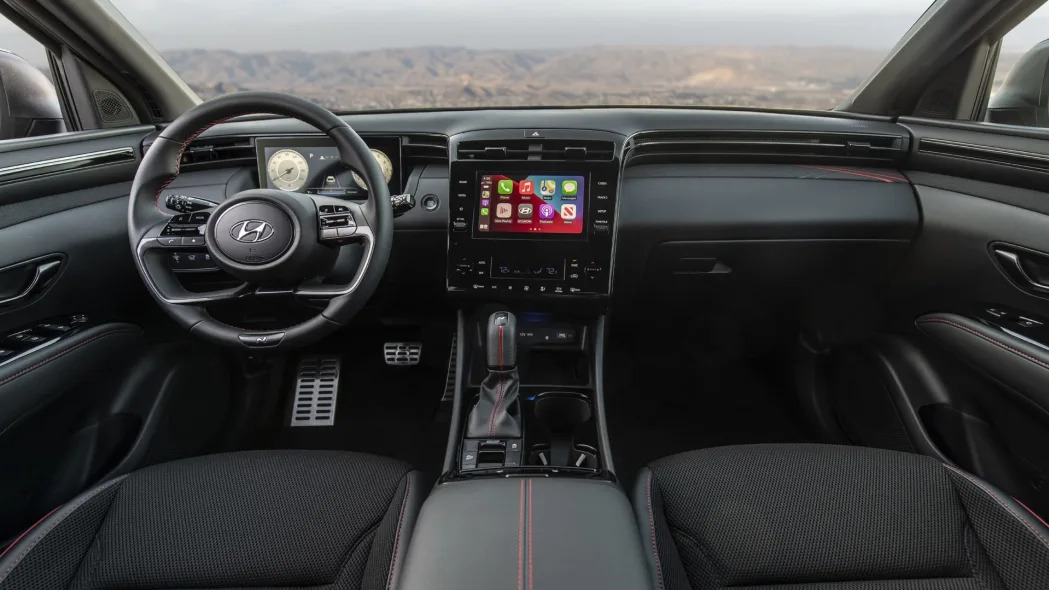
What's the Tucson interior and in-car technology like?
In a segment where many competitors go with a more functional aesthetic, the Hyundai Tucson is more stylish, more tech-focused and more premium. We especially like the dash-width vents and cloth trim. Plastics and switchgear are of a high quality as well. There are some key differences based on trim level, however. Besides upholstery and color choices, the center stack controls actually differs. Most come with an 8-inch touchscreen, while an upgrade 10.25-inch widescreen unit is available as upgrade. Their basic user interface is similar, but the bigger screen increases functionality. Unusually, only the 8-inch screen is compatible with wireless Android Auto and Apple CarPlay; the larger unit requires a wired connection. This is true of most recent Hyundai products, and the 10.25-inch system will get new hardware in future model years to address this.
With either, Hyundai ditched a traditional volume knob and other physical controls, which is a downgrade. Low-end models get scroll wheels for volume and tuning (below left) which is technically better than the tap-tap-tapping you have to do with the all-touch controls paired with the 10.25-inch unit (below right), but they're still strange. Touch-sensitive controls have also historically been difficult to find and successfully press while driving and these are no different. All that piano black trim also means lots and lots of finger prints.
Otherwise, the front seats are comfortable and supportive with excellent adjustment on higher trims (base models get just six-way manual adjustment). Rear-seat recline and remote fold-down features are standard, and heating for the rear bench is available on the range-topping Limited model.
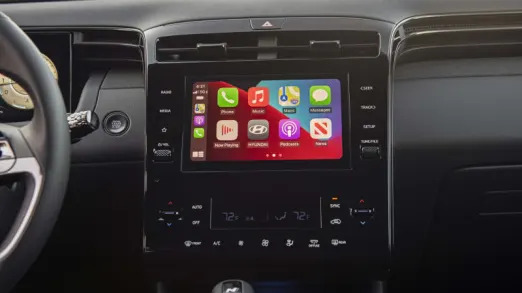
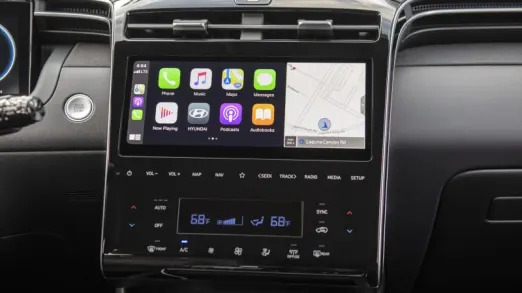
How big is the Tucson?
With a little help from its new, larger platform, the Tucson grew considerably inside for the 2022 model year. It’s now almost exactly the same size as a Toyota RAV4 or Honda CR-V, falling right in the sweet spot for the compact segment. Besides offering plenty of room for adults, we could easily fit a rear-facing child seat while maintaining plenty of space up front for driver and passenger.
Behind the raised back seat, Hyundai now claims 38.7 cubic feet of rear cargo room, which puts it right between the Honda CR-V and Toyota RAV4. At least on paper. As we discovered in our Tucson luggage test, the new Tucson can actually hold a bit more than them when it comes to actual stuff. There is an asterisk, though. Although the Tucson Hybrid has the same cargo capacity on paper as the gas-only version, it does not have a spare tire (like the CR-V Hybrid, but unlike the RAV4 Hybrid). So, you do lose something by adding batteries -- it's just not obvious on the spec sheet or when loading bags.
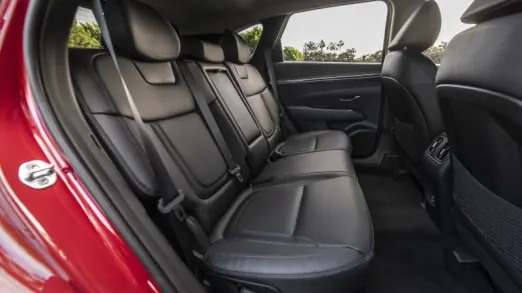
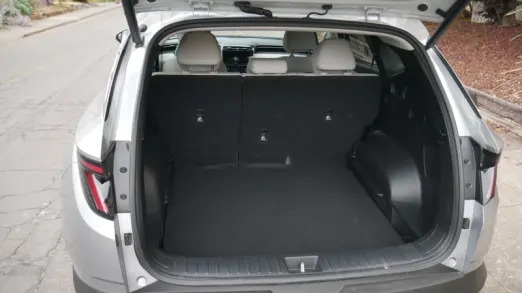
What are the Tucson fuel economy and performance specs?
The Tucson has spawned some new offshoots for 2022, including hybrid and plug-in hybrid variants, meaning there’s likely a model for just about any taste.
The base model’s 2.5-liter 4-cylinder makes an adequate but uninspiring 187 horsepower and 178 pound-feet of torque. It’s rated at 26 mpg city, 33 mpg highway and 29 mpg combined with front-wheel drive, which is competitive for the segment. AWD drops those figures to 24/29/26 mpg.
The hybrid model ups the performance to 226 horses and 258 lb-ft and ups the fuel-economy figures to 38 mpg city/highway/combined on the ultra-efficient Blue model and 37/36/37 mpg on the SEL Convenience and Limited trims. These don’t quite measure up to the CR-V and RAV4 hybrids, but are significant upgrades over the Hyundai’s standard engine, and the hybrid provides a better driving experience to boot.
The Tucson Plug-in Hybrid offers a potent combined output of 261 total horsepower and 224 lb-ft of torque. It offers 33 miles of all-electric driving range and its rated by the EPA at 80 miles-per-gallon equivalent (MPGe). This is less than the RAV4 Prime's 42 miles and 94 MPGe.
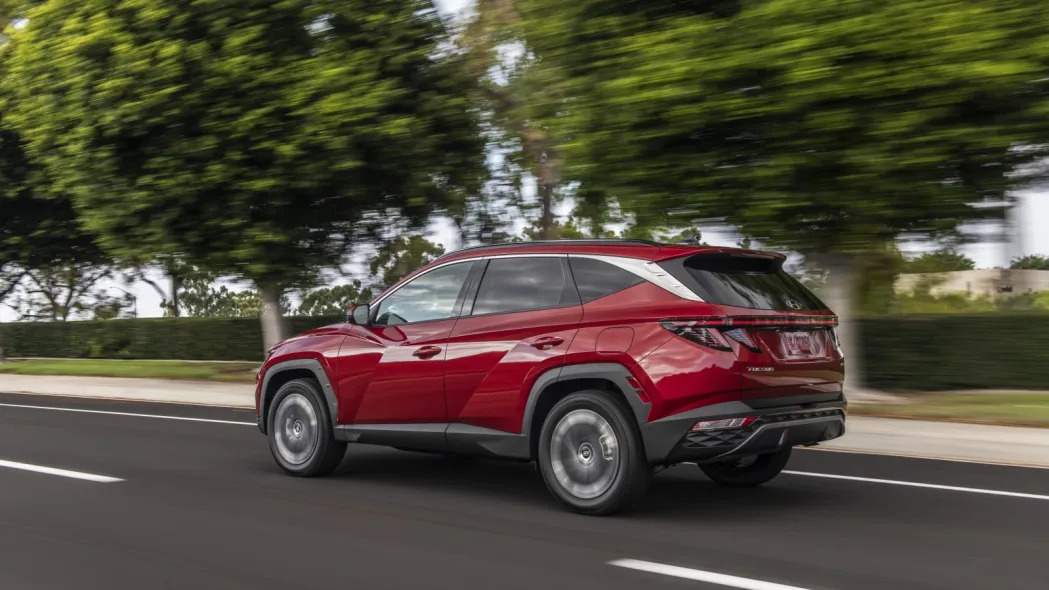
What's the Tucson like to drive?
We described the standard 2.5-liter engine as “blah” above, and that’s about the nicest thing we can say about it. Its sluggish throttle response and reliance on downshifting to maintain speed makes it frustrating to drive in traffic as the eight-speed automatic hunts for gears. The experience is improved when utilizing the Tucson’s adaptive cruise control and/or available Highway Drive Assist semi-self-driving feature. In other words, when you're barely driving it.
Thank goodness there's such a good alternative available in the Tucson Hybrid, which smooths out the engine’s stumbles with the help of a turbocharger and electric assist. The hybrid feels punchy and responsive enough to mask its increased weight, and it’s far more pleasant to drive in congested areas or stop-and-go traffic than the regular model. Its traditional six-speed automatic also makes it accelerate in a more normal manner than Toyota's e-CVT and Honda's uniquely complicated system. The Tucson Hybrid should improve this even more and comes with the added benefit of emissions-free short-distance commuting, though we have yet to test it. We also hadn't tested the new Tucson N Line at the time of this writing.
What other Tucson reviews can I read?
2022 Hyundai Tucson First Drive Review
We spent some time with both the 2.5-liter and hybrid models.
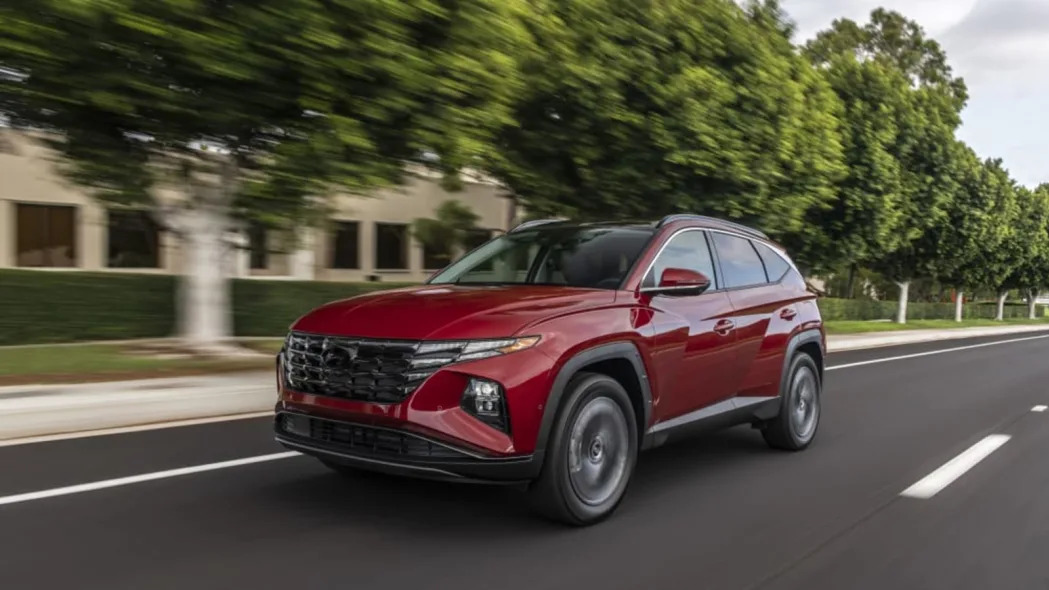
2022 Hyundai Tucson driveway and infotainment test
The lack of a volume knob is disappointing, but the loaded-up Tucson's infotainment is still quite good.
@autoblog The interior of the 2021 Hyundai Tucson is a very nice place to be ##hyundai ##cars ##carsoftiktok
♬ original sound - Autoblog
2022 Hyundai Tucson Luggage Test
We find out that the Tucson can haul more luggage than any other compact SUV we've tested. It may or may not come with a spare tire, though.
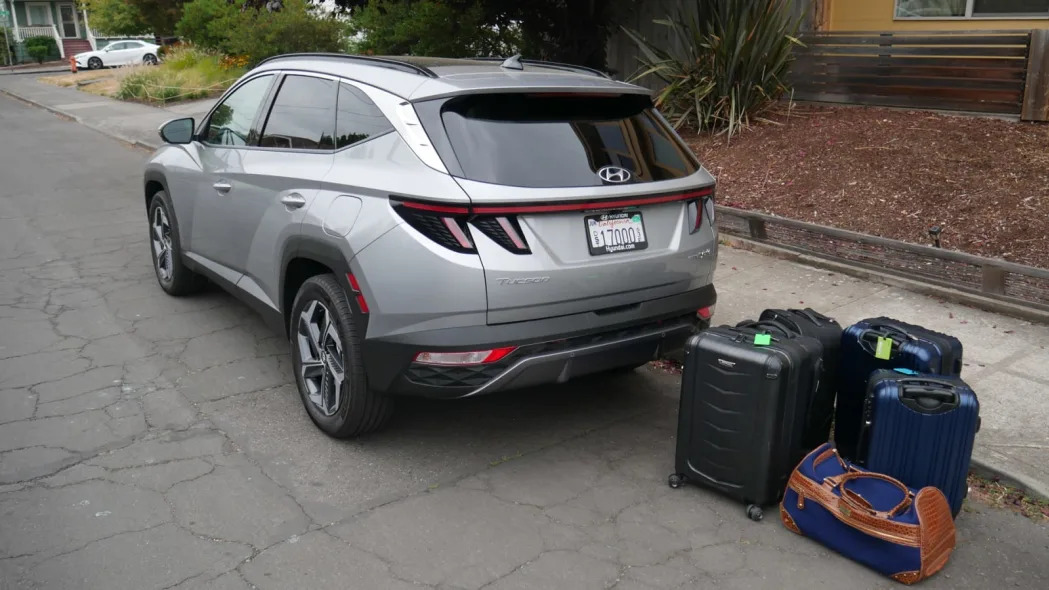
How much is the 2022 Tucson price and what features are available?
The base, front-wheel-drive Tucson SE starts at $26,135 (including the $1,185 destination charge). Standard equipment includes 17-inch alloy wheels, some LED exterior lighting, remote keyless entry, power locks and windows, and the remote-folding 60/40-split second row. The SEL ups the price to $27,685 and adds LED tail lamps, a handful of advanced safety features, heated front seats and side mirrors, adaptive cruise control, and rear USB outlets among other features.
Hyundai’s N Line adds sporty interior and exterior accents and unique 19” wheels at $31,785, and the range-topping Limited comes in effectively loaded, adding a panoramic sunroof, projector LED headlights, the 10.25-inch screen and lots of other goodies for $35,885.
Adding AWD to any model will set you back $1,500. Stepping up to the hybrid model eliminates the base SE variant and N-Line models and adds a roughly $1,000 premium at the SEL level—well worth it for the improved driving experience and fuel economy.
Pricing and packaging for the Plug-in model are not yet available.
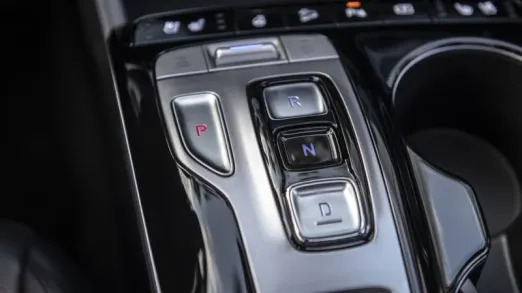
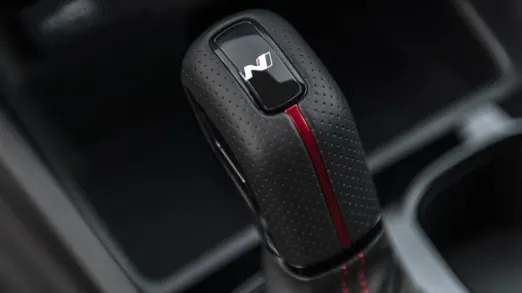
What are the Tucson safety ratings and driver assistance features?
The Insurance Institute for Highway Safety named the 2022 Tucson a Top Safety Pick+ for its best-possible performance in all crash tests and for its frontal crash protection systems. The Limited trim's headlights were rated a top "Good," while the base headlights got the second-best "Acceptable" rating.
The SE model comes standard with forward collision warning and automatic emergency braking, lane keeping assist and driver attention monitoring. Upgrading to the SEL model adds blind spot collision avoidance and rear automatic emergency braking. Limited models bake in Hyundai’s Highway Drive Assist semi-self-driving system, a 360-degree camera system, blind spot cameras, reverse parking collision avoidance assist, Smart Park remote parking and rain-sensing wipers.











Sign in to post
Please sign in to leave a comment.
Continue